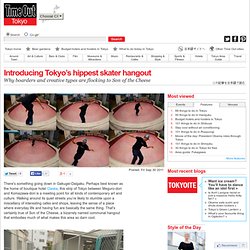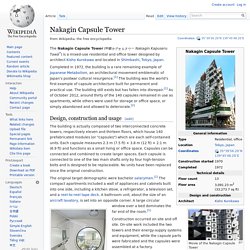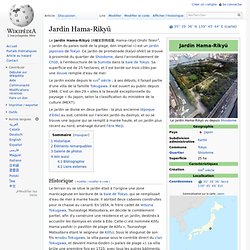

Introducing Tokyo’s hippest skater hangout. There's something going down in Gakugei-Daigaku.

Perhaps best known as the home of boutique hotel Claska, this strip of Tokyo between Meguro-dori and Komazawa-dori is a meeting point for all kinds of contemporary art and culture. Walking around its quiet streets you’re likely to stumble upon a miscellany of interesting cafes and shops, leaving the sense of a place where everyday life and having fun are basically the same thing. That's certainly true of Son of the Cheese, a bizarrely named communal hangout that embodies much of what makes this area so darn cool.
Created by skaters, for skaters At first glance, this hideaway located on Meguro-dori is a mystery. Son of the Cheese. 1-4-14 Chuo-cho, Meguro-ku, Tokyo (03-6452-4445). Friends and neighbours of Son of the Cheese Son of the Cheese was created by a variety of people, from professional skatepark builders to old friends of Kaito’s, to guys he had only just met. Koji Oba, skateboard/ramp design & construction Official website Blog. Son of the Cheese. Nakagin Capsule Tower. Movie of the Nakagin Capsule Tower The Nakagin Capsule Tower (中銀カプセルタワー, Nakagin Kapuseru Tawā?)

Is a mixed-use residential and office tower designed by architect Kisho Kurokawa and located in Shimbashi, Tokyo, Japan. Completed in 1972, the building is a rare remaining example of Japanese Metabolism, an architectural movement emblematic of Japan's postwar cultural resurgence.[1] The building was the world's first example of capsule architecture built for permanent and practical use. The building still exists but has fallen into disrepair.[1] As of October 2012, around thirty of the 140 capsules remained in use as apartments, while others were used for storage or office space, or simply abandoned and allowed to deteriorate.[2] Design, construction and usage[edit] The building is actually composed of two interconnected concrete towers, respectively eleven and thirteen floors, which house 140 prefabricated modules (or "capsules") which are each self-contained units.
Jardin Hama-Rikyū. Un article de Wikipédia, l'encyclopédie libre.

Le jardin existe depuis le XVIIe siècle ; à ses débuts, il faisait partie d'une villa de la famille Tokugawa. Il est ouvert au public depuis 1946. C'est un des 29 « sites à la beauté exceptionnelle du paysage » du Japon, selon la classification du ministère de la culture (MEXT). Le jardin se divise en deux parties : la plus ancienne (époque d'Edo) au sud, centrée sur l'ancien jardin du daimyo, et où se trouve une lagune qui se remplit à marée haute, et un jardin plus récent au nord, aménagé durant l'ère Meiji. Historique[modifier | modifier le code] Le terrain où se situe le jardin était à l'origine une zone marécageuse en bordure de la baie de Tokyo, qui se remplissait d'eau de mer à marée haute.
Le jardin prend sa forme définitive sous le shogunat de Ienari Tokugawa. En 1867, juste avant la restauration de Meiji, le domaine est transféré au ministère de la marine. Éléments remarquables[modifier | modifier le code]